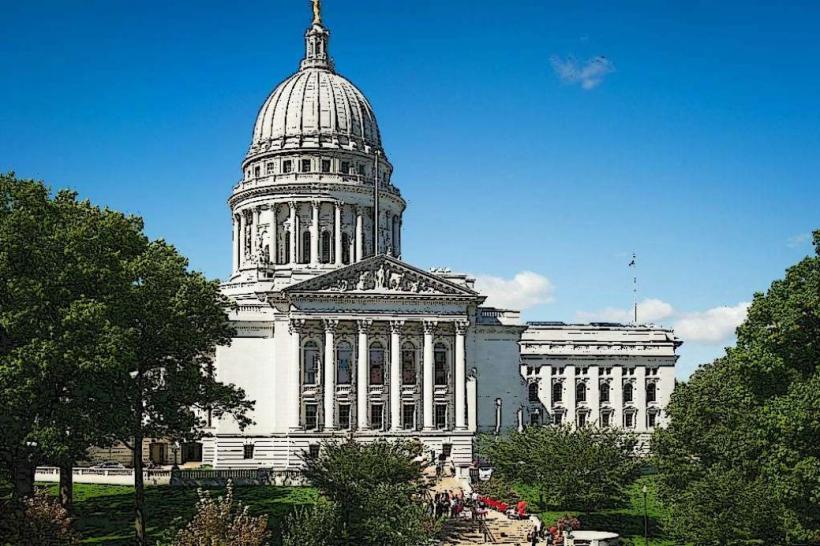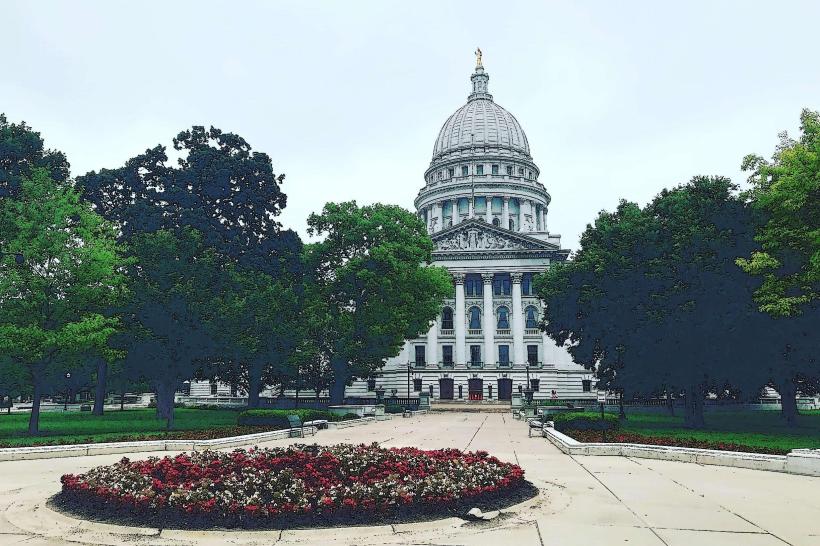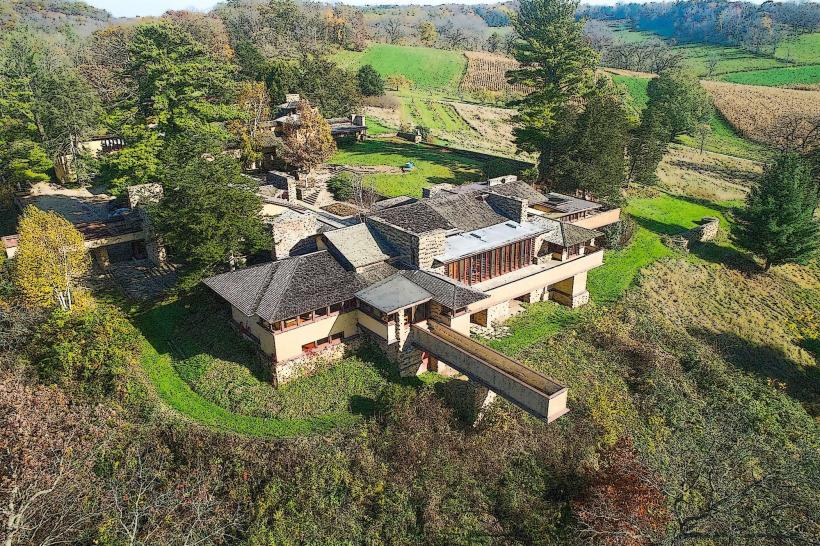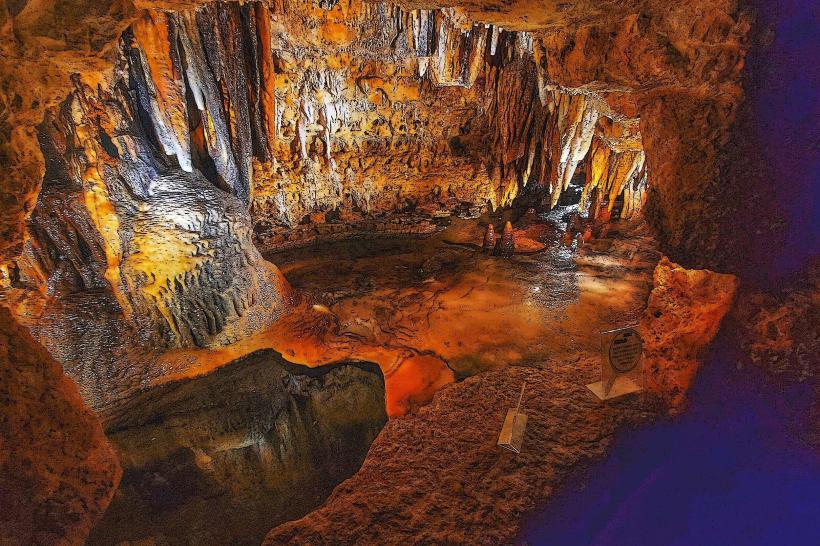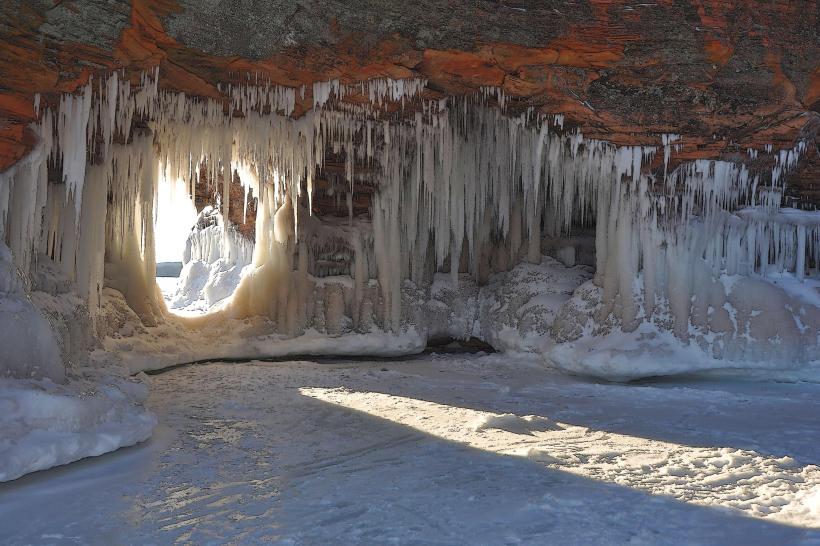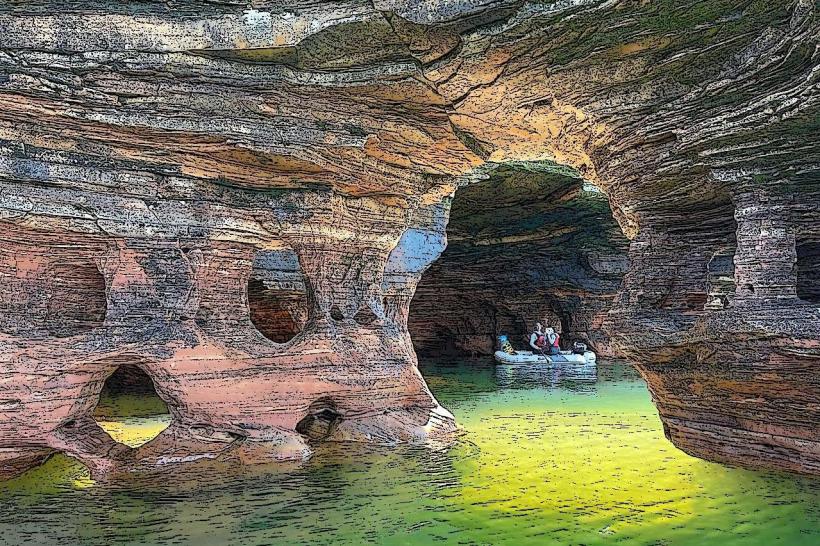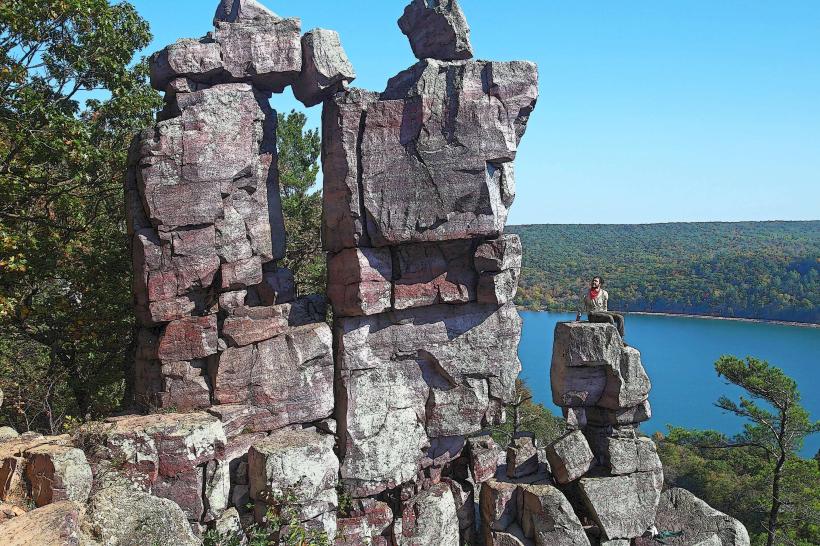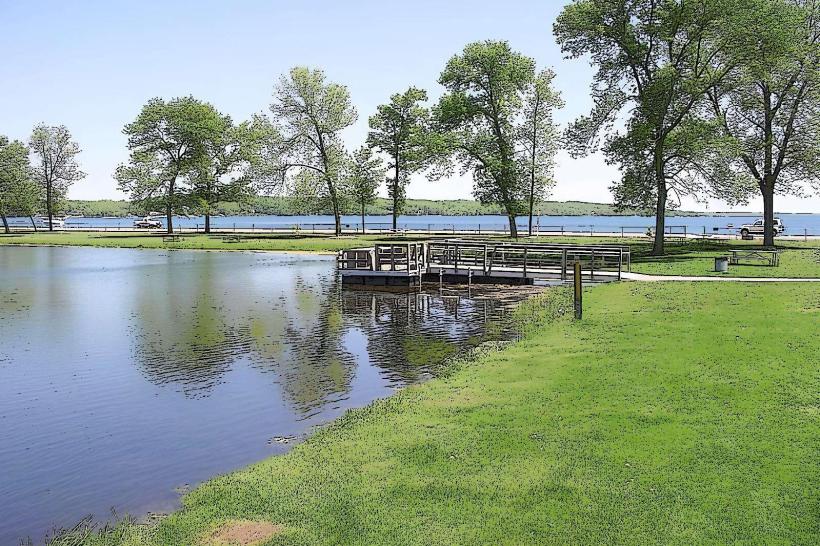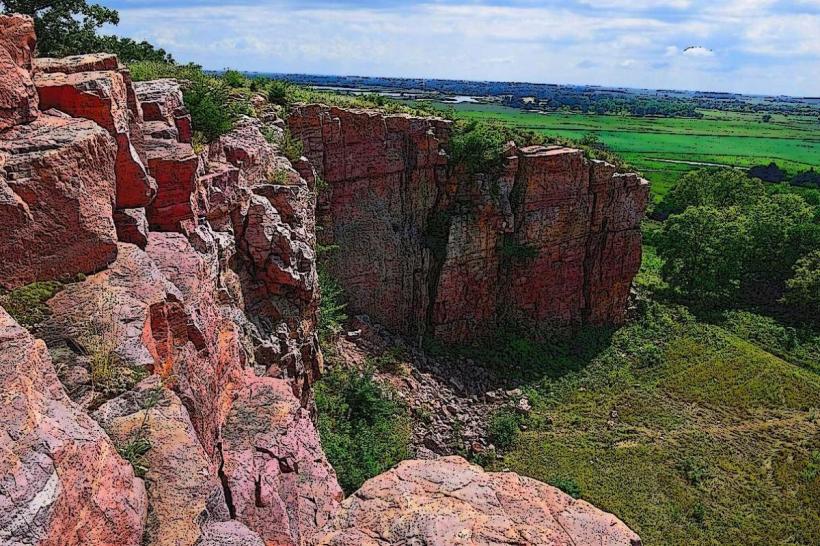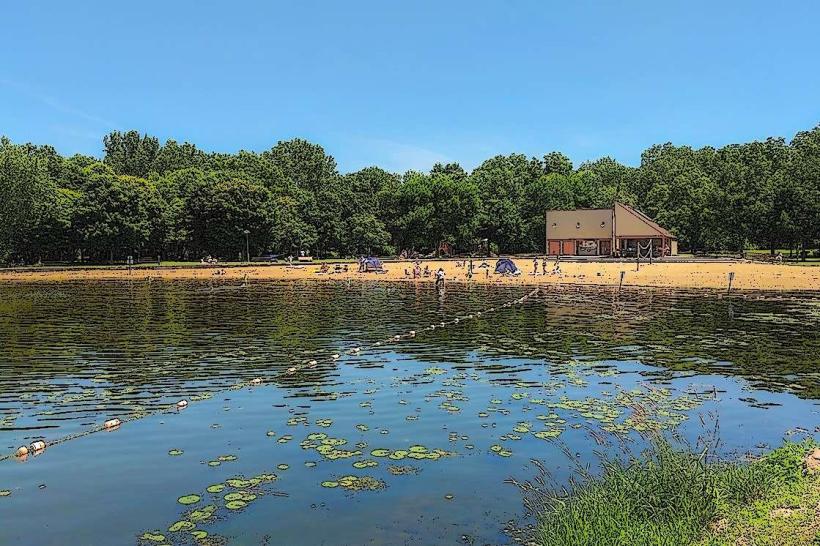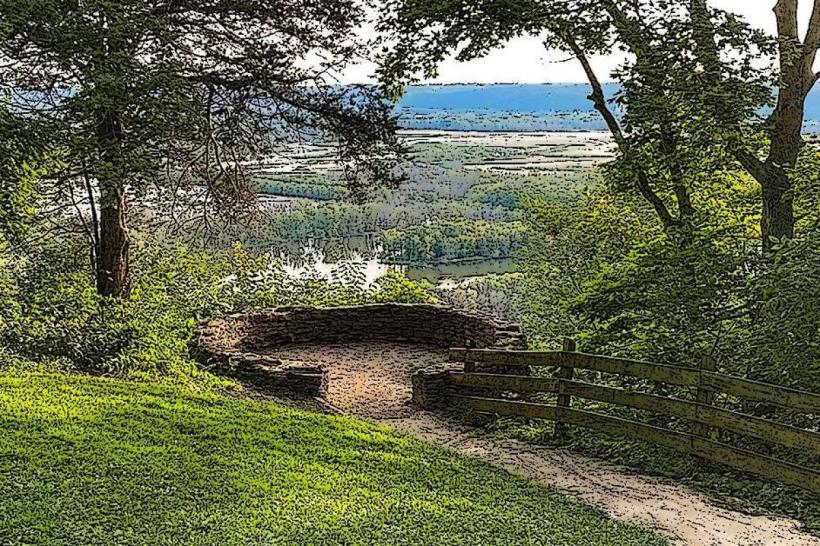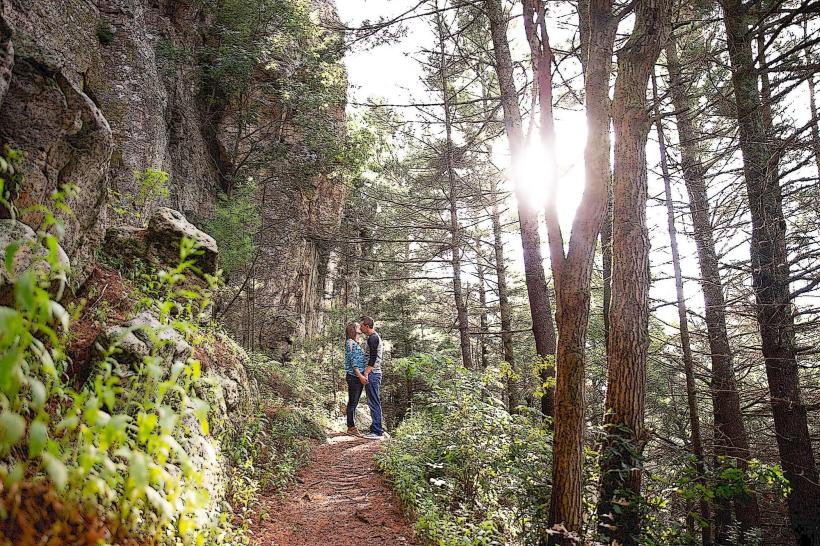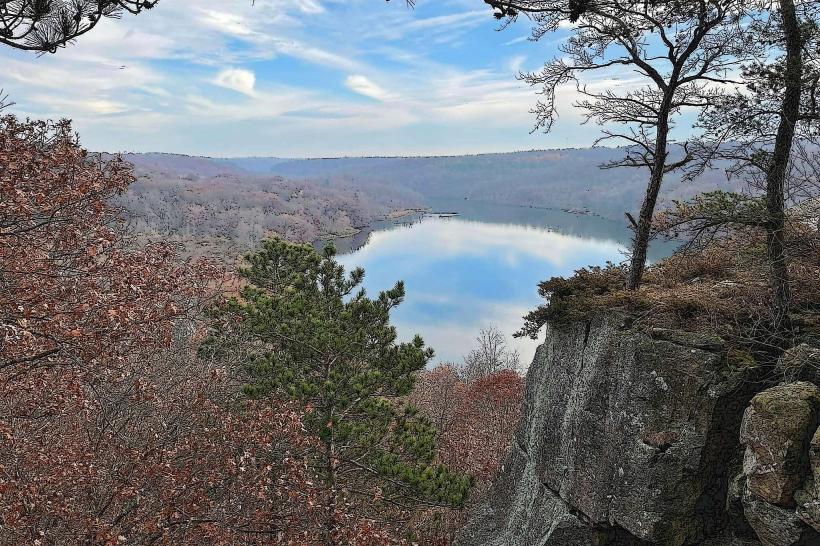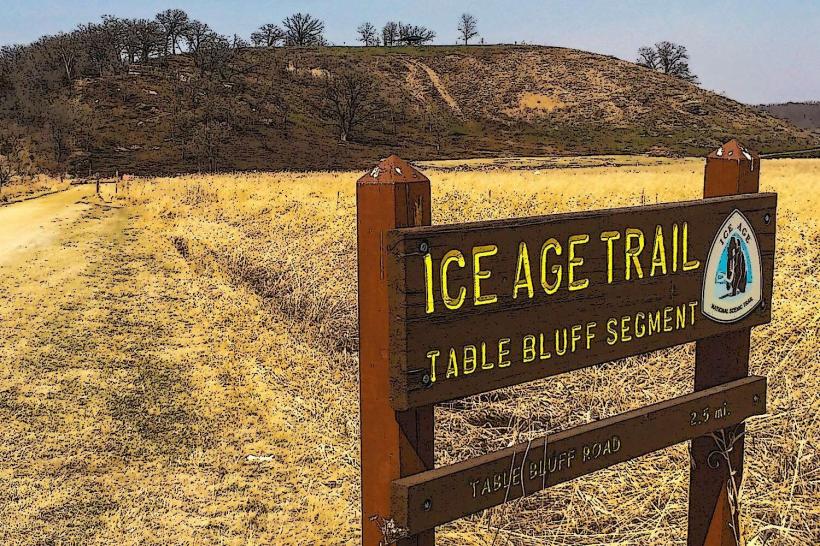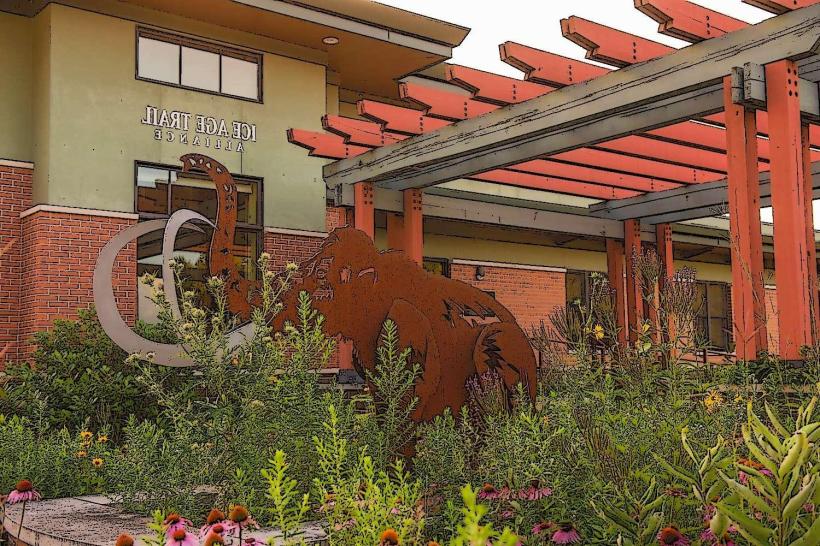Information
Landmark: Apostle Islands National LakeshoreCity: Madison WI
Country: USA Wisconsin
Continent: North America
Apostle Islands National Lakeshore, Madison WI, USA Wisconsin, North America
Apostle Islands National Lakeshore, located along the northern tip of Wisconsin on the shores of Lake Superior, is one of the Midwest's most breathtaking natural treasures. Encompassing 21 of the 22 Apostle Islands and a stretch of mainland coastline, this federally protected area offers dramatic sea caves, pristine old-growth forests, historic lighthouses, sandy beaches, and unspoiled wilderness.
Origins and Natural History
Established: 1970, expanded in 1986, and managed by the U.S. National Park Service.
Size: Over 69,000 acres of land and water, including about 12 miles of mainland coastline.
Geology: The islands and coastline are composed largely of ancient red sandstone shaped by glacial movement and millennia of water and ice erosion. This has created spectacular features like sea caves, cliffs, arches, and natural bridges.
Driftless Island Formations: Unlike many other parts of the Midwest, this area avoided major glaciation, preserving older geological features and ecosystems.
Key Natural Features
Sea Caves: The Apostle Islands are most famous for their intricate sea caves, particularly along the mainland near Meyers Beach and on Devils Island. In summer, these can be explored by kayak or boat. In winter, if Lake Superior freezes solidly, the caves transform into ice cathedrals with massive icicles and can be accessed by foot-an incredibly rare phenomenon.
Singing Sands: Found on Julian Bay on Stockton Island, this natural phenomenon causes the sand to emit audible squeaks and chirps when walked upon due to its unique quartz composition and grain size.
Old-Growth Forests: Several islands, especially Outer Island and Stockton Island, host old-growth hemlock, maple, and white pine, offering a look at what northern Wisconsin forests once looked like before logging.
Cultural and Historical Highlights
Ojibwe Heritage: The area is part of the ancestral homeland of the Lake Superior Chippewa (Ojibwe) people. Some islands retain cultural significance, and traditional uses such as wild rice harvesting continue today.
Lighthouses: The Apostle Islands have the largest concentration of historic lighthouses in North America. Notable ones include:
Raspberry Island Light – restored and open to visitors
Devils Island Light – sits atop a dramatic cliff with panoramic lake views
Michigan Island Light – with both the original 1856 tower and a newer 1929 tower
Logging and Fishing Camps: Historic sites like the Manitou Fish Camp preserve the legacy of 19th-century commercial fishing and brownstone quarrying. Some of these sites are listed on the National Register of Historic Places.
Outdoor Activities
Kayaking: One of the most popular ways to explore the islands and their shoreline. Sea kayakers can paddle into sea caves and land on secluded beaches.
Camping: Primitive campsites are located on 19 islands and on the mainland. Permits are required, and camping is typically pack-in, pack-out.
Hiking: Over 50 miles of trails wind through island interiors and along the coast. Trails range from easy walks to multi-day backpacking loops.
Boating: Many visitors access the islands by sailboat, motorboat, or water taxi. Several islands have docks and anchorages.
Scuba Diving: The cold, clear waters of Lake Superior preserve numerous shipwrecks, making the area ideal for experienced divers.
Wildlife Viewing: The islands are home to black bears, red foxes, otters, bald eagles, loons, and over 200 bird species. Stockton Island alone supports one of the highest concentrations of black bears in the U.S.
Winter Attractions
Ice Caves: When conditions are safe (which only happens a few winters per decade), visitors can hike across frozen Lake Superior to reach the Mainland Ice Caves near Meyers Beach. These glistening ice palaces feature frozen waterfalls, chandeliers of icicles, and glowing blue walls of ice.
Snowshoeing and Cross-Country Skiing: While not widely developed for winter recreation, trails on the mainland and Madeline Island offer beautiful snowy solitude.
Visitor Access and Services
Bayfield, Wisconsin: This small, picturesque town is the main gateway to the park. It offers restaurants, shops, marinas, hotels, and the Apostle Islands National Lakeshore Visitor Center.
Transportation to the Islands: Access is by private boat, kayak, guided tour, or commercial water taxi. The Madeline Island Ferry connects Bayfield to nearby Madeline Island (not part of the park), which also has museums, hiking, and lodging.
Permits: Required for camping, group visits, and certain boating and diving activities. There is no general entrance fee to the park.
Visitor Seasons: Open year-round, though most island services, guided tours, and ferries operate only May through October.
Environmental Stewardship
The Apostle Islands have been carefully preserved to maintain their ecological integrity. The park enforces strict Leave No Trace principles.
Restoration projects continue on some islands to control invasive species and protect native habitats.
The National Park Service coordinates with tribal leaders, researchers, and volunteers to manage land, water, and heritage sites collaboratively.
Nearest Major City
The closest major city is Duluth, Minnesota, located about 120 miles (190 km) west.
Superior, Wisconsin, is approximately 90 miles (145 km) away.
Minneapolis–St. Paul is around 300 miles (480 km) southwest.
Madison, WI, is approximately 300 miles southeast.
Summary
The Apostle Islands National Lakeshore offers an extraordinary blend of natural beauty, ecological diversity, rich cultural heritage, and outdoor recreation. Whether kayaking through glowing sandstone caves, hiking among towering old-growth trees, exploring historic lighthouses, or witnessing the frozen spectacle of the ice caves, the park delivers an unmatched experience of Lake Superior’s wild spirit. It is a haven for solitude seekers, adventurers, naturalists, and history enthusiasts alike.


